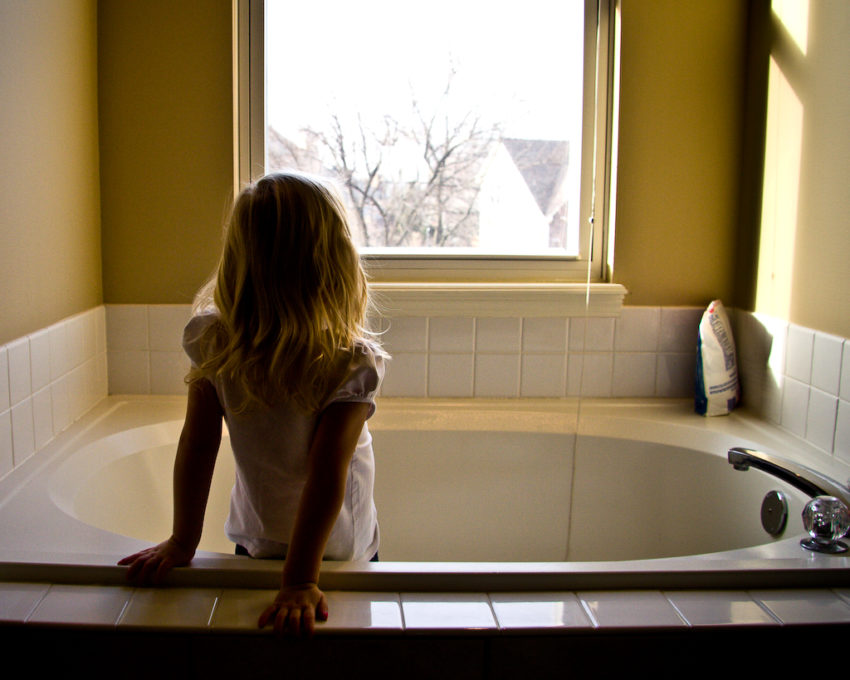 Every parent seems to have questions about potty training, and new adoptive parents often wonder if their child’s behavior is “normal” or not. Recently, a parent contacted me about her child who had just arrived in the US. She was definitely experiencing the “bathroom blues” with her toddler- see if this sounds familiar:
Every parent seems to have questions about potty training, and new adoptive parents often wonder if their child’s behavior is “normal” or not. Recently, a parent contacted me about her child who had just arrived in the US. She was definitely experiencing the “bathroom blues” with her toddler- see if this sounds familiar:
“Potty training has been problematic. He will not poop in the toilet and only tells me after he has started going in his underwear, and he has a couple of peeing accidents a day. When I try to clean his bottom after he poops in his underwear, he refuses to lie still and runs around the house without any pants on and makes me chase him.”
All children potty train at different times; both of my children were opposites at this! The main thing is that a child must be truly ready to engage in the potty training process, or it just won’t work. Since all children develop physically on their own unique timelines, identifying when you can effectively begin this process will always look different for each child. And don’t forget, 80% of children will have potty training setbacks of some kind! You have to be patient and understanding as your child transitions to mastering this new and more difficult behavioral skill set. Start by assessing whether or not your child is really ready to begin potty training:
- Can your child remain dry for several hours?
- Does your child let you know when he urinates or defecates, even when in a diaper?
- Does he have regular bowel movements?
- Can he communicate to you when he has to go to the bathroom? Can he identify the need or urgency?
- Does he generally follow your instructions?
- Can he actually walk to the potty chair, get up, and sit there on his own?
- Does he have control of his muscles yet?
- Can he pull down his pants without your assistance?
If you can answer “yes” to these questions, your child is likely ready to begin potty training. If not, he may need a little more time to develop physically and mentally so that he can handle the responsibilities and identify the signals that are needed in order to potty train.
Some children are afraid to defecate in the toilet, especially a full-sized one. Be sure you have a toddler-sized potty chair . This makes it physically easier to go to the bathroom; convenience is a good incentive!
Talk about the potty training process with your child in a calm and instructional manner before you start, so he understands. If you think he really does not understand what you are trying to explain, wait until he can. You want your child to have the understanding and focus to succeed!
Take him to the bathroom about every hour or so and encourage him. Don’t get upset if he can’t or won’t go. It is not going to happen every time; our bodies all function differently. You may want to take him when you go so he can see this as a normal process, i.e. “everybody does it.” Telling you after he defecates and having accidents are normal when a child is learning to potty train. It is part of the learning process and does improve eventually. There should be no shame or anger during potty training… ever! Only praise your child and, if needed, use easy rewards (a small treat, play a game with him, do a puzzle together, take a walk together, etc) to acknowledge accomplishments. If power struggles occur, and they will, retreat from potty training for a while. It is OK to do this! Just be aware that all children make progress in their own individual way. It takes time and patience. I remember what my son’s doctor told me when I was frustrated at his lack of progress– “If he goes to 1st grade and is still not potty trained, you can bet it will happen quickly then. Until that point, don’t worry. He will go when he is ready.” And it was true! (Fortunately, it did happen quite a bit before my son started 1st grade.)
You can also read your child a child-friendly potty training book to help him begin to grasp the concept. There are many of these available in every book store or on Amazon. A book you and your spouse may want to read is by Elizabeth Pantley called The No Cry Potty Training Solution.
Some other tricks you can also try are: decorating your child’s potty chair together (with favorite stickers or colorful markers); letting him choose his own underwear or training pants (a superhero may provide encouragement!); encourage him verbally when he is sitting on the potty (you can do this!); read to your child or blow bubbles together (distraction sometimes helps the process). When he succeeds, cheer loudly! Make it a big deal! Some people potty train their children by allowing them to not wear pants or diapers around the house. The decision to do this, however, is up to you.
When you enter this phase of development with your toddler, remember that most parents experience the same things with their children. Your child is not only learning a new skill and routine, but he is beginning to gain control of his own body. That is a great deal to master at once. Be patient, consistent, understanding, and calm. The bathroom blues only last for a short while!
Photo Credit: thephotographymuse
